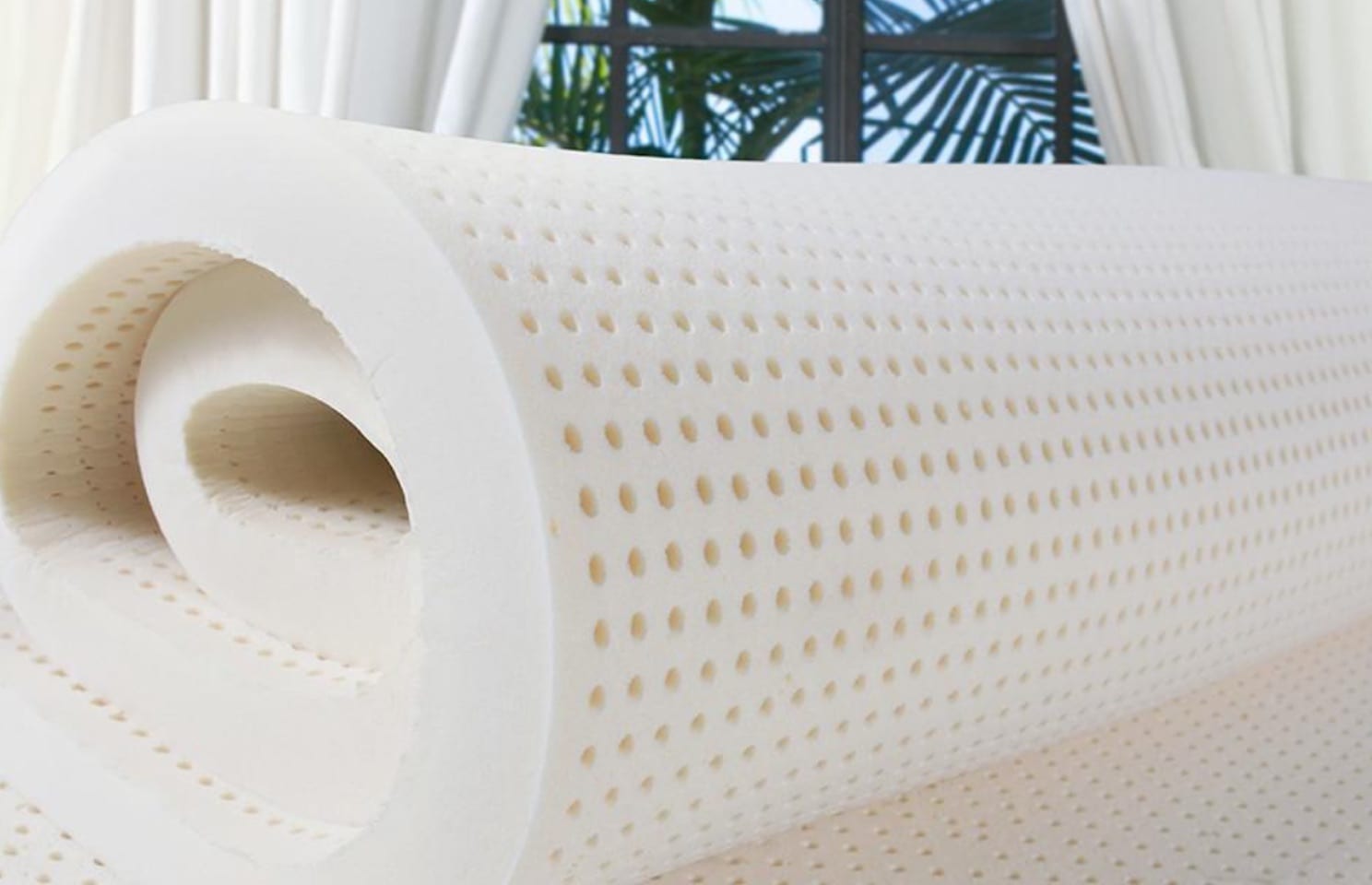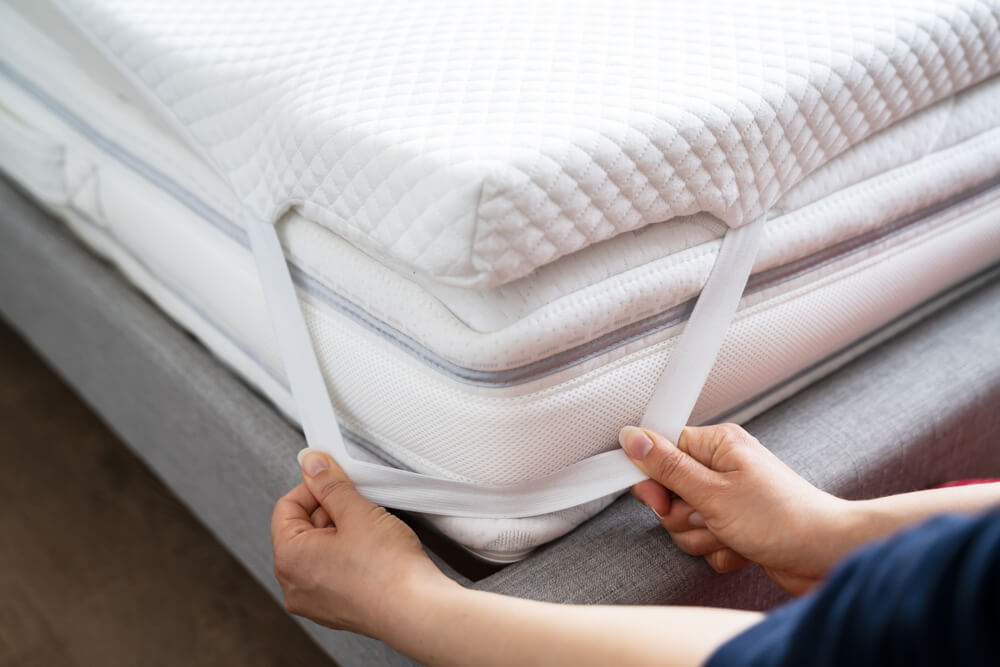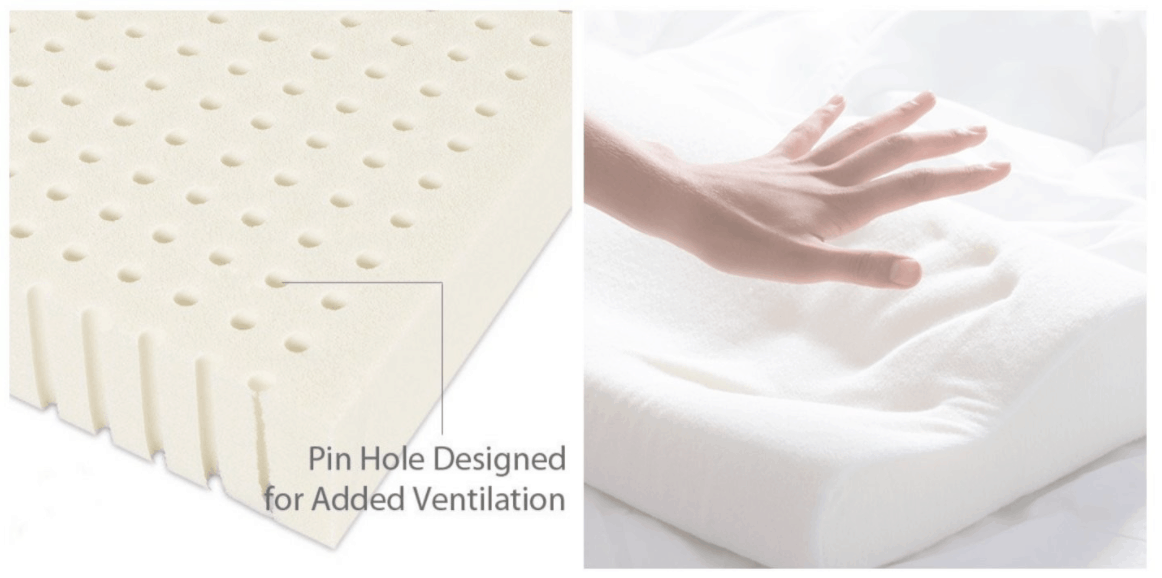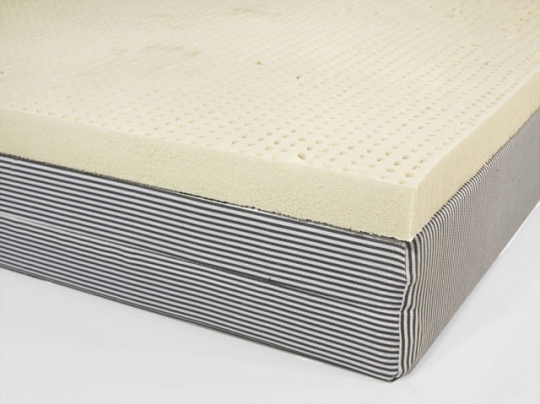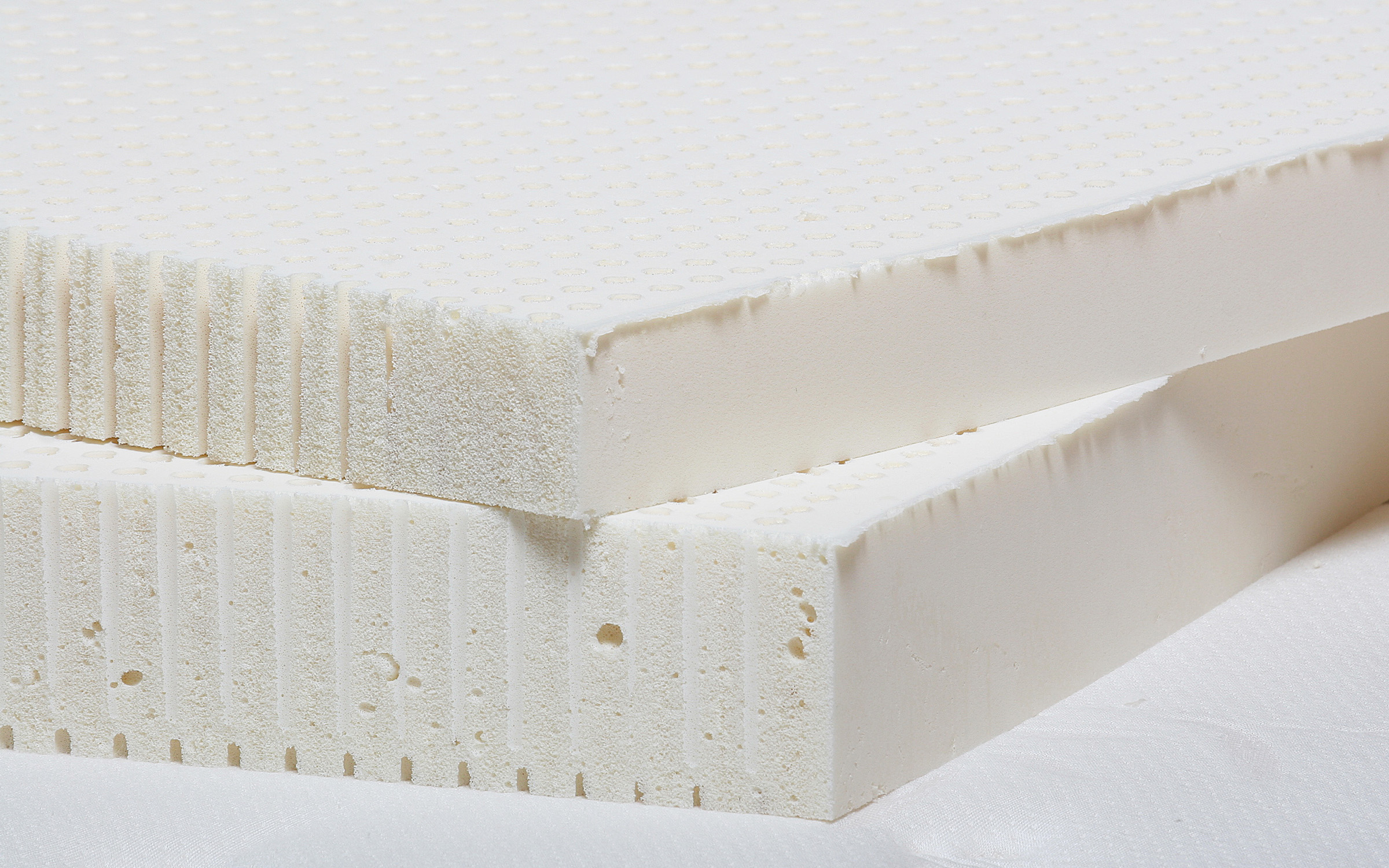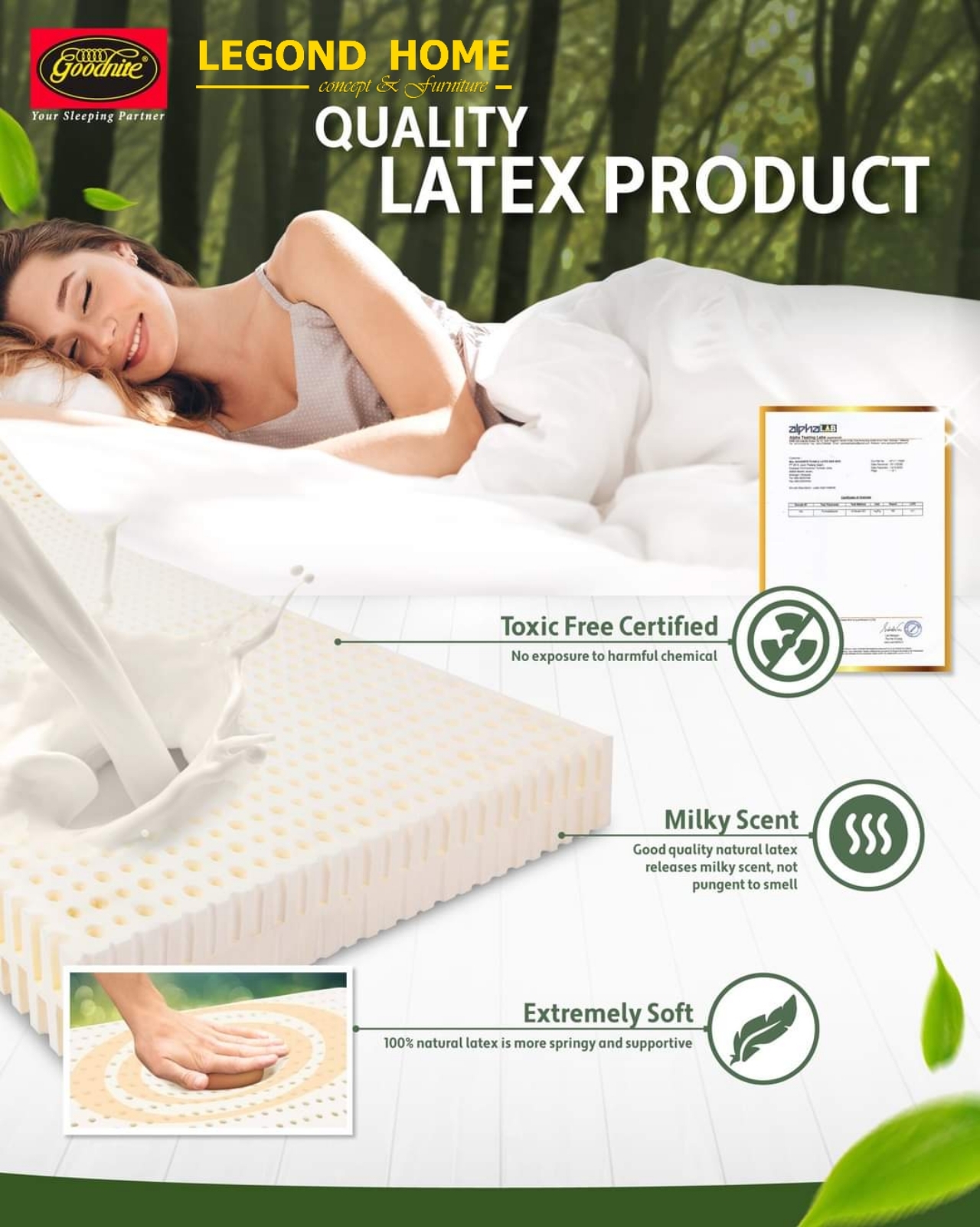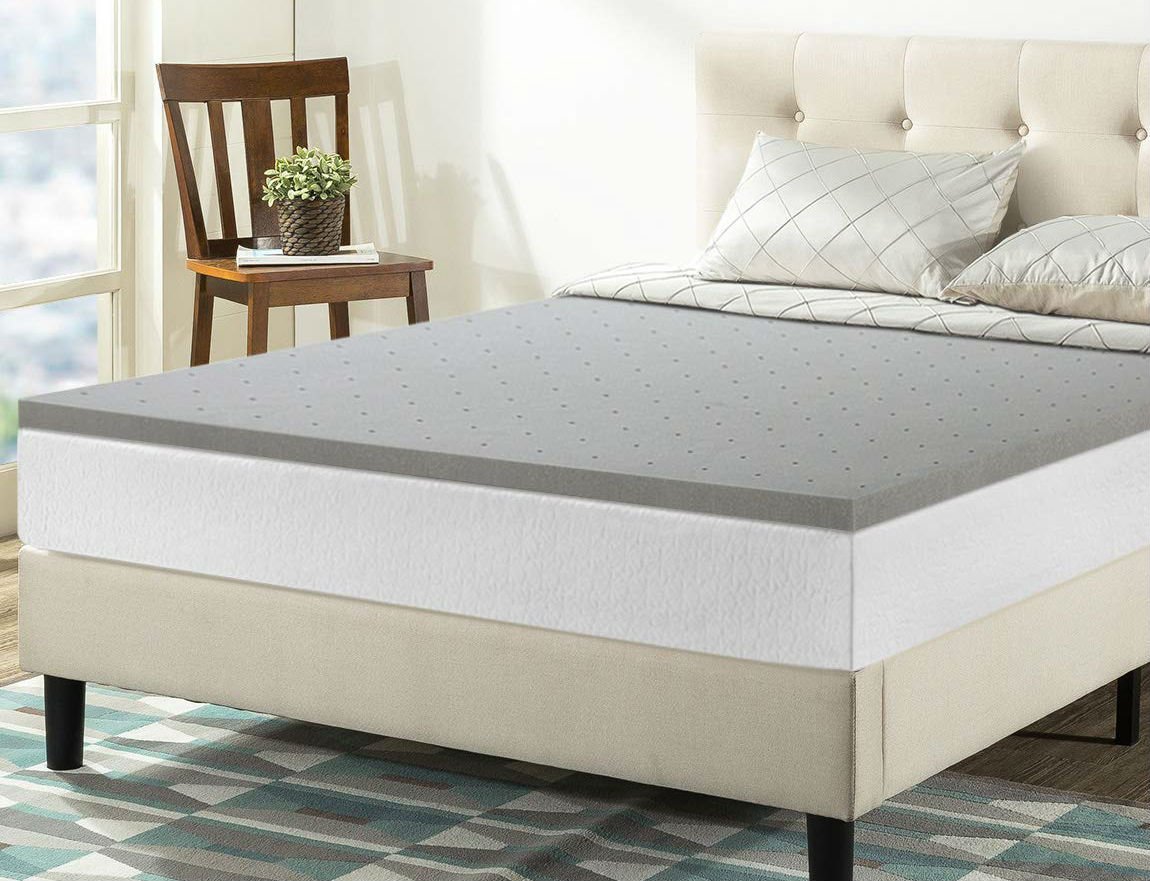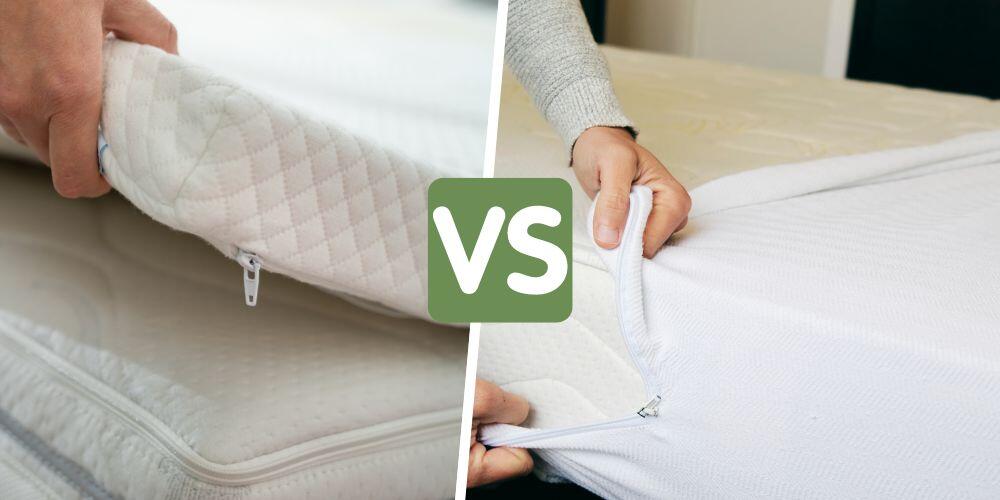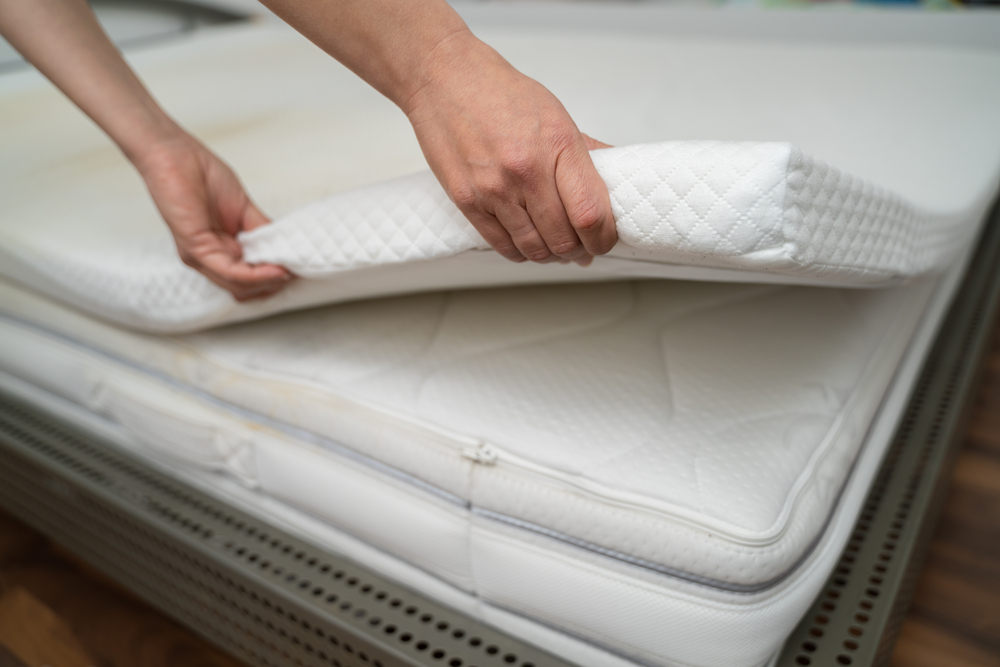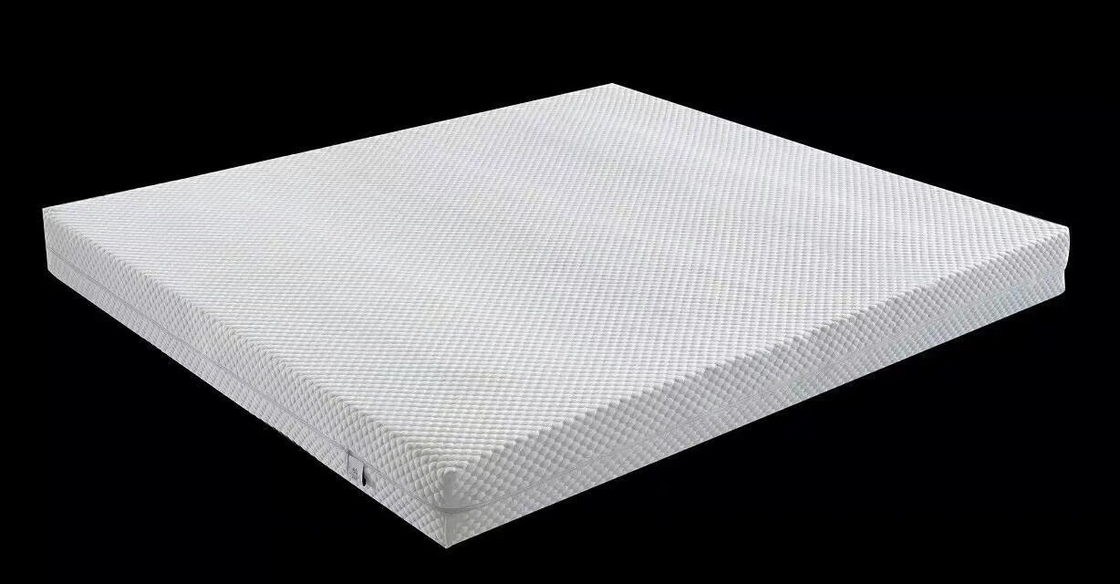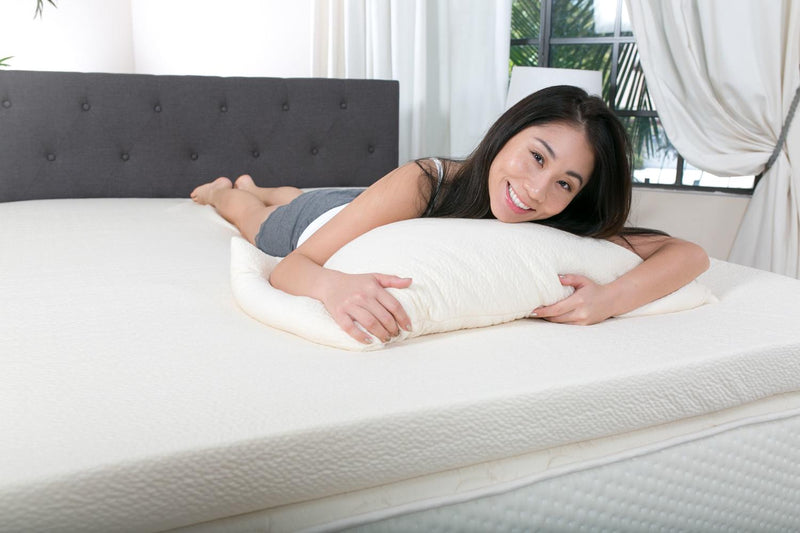When it comes to choosing the best mattress topper for your bed, two popular options often come to mind: latex and memory foam. So, which one should you go for? Let's compare latex mattress toppers and memory foam mattress toppers to help you make an informed decision. Latex vs Memory Foam - Both latex and memory foam are popular materials used in mattress toppers. Latex is a natural material made from the sap of a rubber tree, while memory foam is a synthetic material created from polyurethane. This means that latex is a more eco-friendly option compared to memory foam. Comfort and Support - Both latex and memory foam offer a comfortable and supportive sleep surface. However, latex has a more springy feel, providing a bit more bounce and support, while memory foam conforms to the body's shape and eliminates pressure points. This makes latex a better option for those who prefer a firmer sleep surface, while memory foam is ideal for those who prefer a softer one. Temperature Regulation - One of the main differences between latex and memory foam is their ability to regulate body temperature. Latex is naturally breathable and allows for good air circulation, making it a cooler option compared to memory foam, which tends to retain heat. This makes latex a better choice for those who tend to sleep hot. Durability - Latex mattress toppers are known for their durability and can last for up to 20 years. On the other hand, memory foam mattress toppers have an average lifespan of 5-10 years. This makes latex a better long-term investment.Latex Mattress Topper vs Memory Foam
Another popular type of mattress topper is the feather topper, also known as a featherbed. Let's take a closer look at how a latex mattress topper compares to a feather topper. Latex vs Feather - Latex and feather toppers are both great options for adding extra comfort and support to your mattress. However, they differ in terms of materials and construction. Latex toppers are made from latex foam, while feather toppers are filled with feathers and down. This makes feather toppers a softer and fluffier option, while latex toppers are firmer and more supportive. Comfort and Support - As mentioned, feather toppers provide a softer and more cushioned sleep surface, making them ideal for those who prefer a plush feel. However, they may not offer enough support for those with back or joint pain. Latex toppers, on the other hand, offer a combination of comfort and support, making them suitable for a wider range of sleepers. Temperature Regulation - Feather toppers tend to retain heat, making them a warmer option compared to latex toppers. Latex toppers have natural cooling properties, allowing for better airflow and temperature regulation. This makes them a better choice for hot sleepers. Maintenance and Allergies - Latex toppers are hypoallergenic and resistant to dust mites, mold, and mildew, making them a more hygienic option. Feather toppers, on the other hand, may cause allergies for some people and require regular fluffing to maintain their shape and loft.Latex Mattress Topper vs Feather
Wool mattress toppers are another popular natural option for adding extra comfort to your bed. Here's how they compare to latex toppers. Latex vs Wool - Both latex and wool are natural materials that offer excellent comfort and support. However, they differ in terms of construction and feel. Latex toppers are made from a foam-like material, while wool toppers are made from natural wool fibers. This makes latex toppers firmer and more supportive, while wool toppers are softer and more plush. Comfort and Support - As mentioned, latex toppers are firmer and offer more support, making them a better option for those with back or joint pain. Wool toppers, on the other hand, provide a softer and more cushioned sleep surface, ideal for those who prefer a plush feel. Temperature Regulation - Wool is known for its excellent temperature regulation properties. It can keep you warm in cold weather and cool in hot weather, making it a great year-round option. However, latex toppers also have natural cooling properties, providing good airflow and heat dissipation. Maintenance and Allergies - Both latex and wool toppers are hypoallergenic and resistant to dust mites, mold, and mildew. However, wool may cause allergies for some people, and it requires regular fluffing to maintain its loft. Latex toppers, on the other hand, require minimal maintenance.Latex Mattress Topper vs Wool
Cotton mattress toppers are another popular natural option, loved for their softness and breathability. Here's how they compare to latex toppers. Latex vs Cotton - Latex and cotton toppers are both natural materials that offer excellent comfort and support. However, they differ in terms of construction and feel. Latex toppers are made from a foam-like material, while cotton toppers are made from soft cotton fibers. This makes latex toppers firmer and more supportive, while cotton toppers are softer and more plush. Comfort and Support - As mentioned, latex toppers are firmer and offer more support, making them a better option for those with back or joint pain. Cotton toppers, on the other hand, provide a softer and more cushioned sleep surface, ideal for those who prefer a plush feel. Temperature Regulation - Cotton is known for its breathability, making it a cooler option compared to latex. However, latex toppers also have natural cooling properties, providing good airflow and heat dissipation. Maintenance and Allergies - Cotton is hypoallergenic and resistant to dust mites, making it a good option for those with allergies. However, it may require more maintenance compared to latex toppers, which require minimal care.Latex Mattress Topper vs Cotton
Down mattress toppers are another popular option, known for their luxurious feel and softness. Here's how they compare to latex toppers. Latex vs Down - Latex and down toppers differ greatly in terms of materials and construction. Latex toppers are made from foam, while down toppers are filled with soft down feathers. This makes latex toppers firmer and more supportive, while down toppers are softer and more cushioned. Comfort and Support - As mentioned, latex toppers offer excellent support, making them a better option for those with back or joint pain. Down toppers, on the other hand, provide a softer and more cushioned sleep surface, ideal for those who prefer a plush feel. However, they may not offer enough support for some sleepers. Temperature Regulation - Down toppers tend to retain heat, making them a warmer option compared to latex toppers. Latex toppers, on the other hand, have natural cooling properties, allowing for good airflow and heat dissipation. Maintenance and Allergies - Down toppers may cause allergies for some people and require regular fluffing to maintain their loft. Latex toppers, on the other hand, are hypoallergenic and require minimal maintenance.Latex Mattress Topper vs Down
Gel mattress toppers are a popular option for those who tend to sleep hot. Let's compare them to latex toppers. Latex vs Gel - Latex and gel toppers are both made from synthetic materials, but they offer different benefits. Latex is a natural material, while gel is a synthetic material created to provide better temperature regulation. This makes latex a more eco-friendly option compared to gel. Comfort and Support - Latex and gel toppers both offer a comfortable and supportive sleep surface. However, latex has a firmer feel and provides more support compared to gel, which has a softer and more cushioned feel. This makes latex a better option for those who need more support, while gel is suitable for those seeking a softer sleep surface. Temperature Regulation - Gel toppers are specifically designed to provide better temperature regulation, making them a cooler option compared to latex toppers. This makes them a better option for hot sleepers. Maintenance and Allergies - Both latex and gel toppers are hypoallergenic and easy to maintain. However, latex is more resistant to dust mites and other allergens, making it a better option for people with allergies.Latex Mattress Topper vs Gel
Polyester mattress toppers are a budget-friendly option, but how do they compare to latex toppers? Latex vs Polyester - Latex and polyester toppers differ greatly in terms of materials and construction. Latex toppers are made from a natural material, while polyester toppers are synthetic. This makes latex a more eco-friendly option compared to polyester. Comfort and Support - Latex and polyester toppers both offer a comfortable sleep surface, but they differ in terms of support. Latex toppers are firmer and provide more support, making them a better option for those with back or joint pain. Polyester toppers, on the other hand, are softer and offer less support. Temperature Regulation - Polyester toppers tend to retain heat, making them a warmer option compared to latex toppers. Latex toppers, on the other hand, have natural cooling properties, allowing for good airflow and heat dissipation. Maintenance and Allergies - Polyester toppers may cause allergies for some people, and they require regular fluffing to maintain their shape. Latex toppers, on the other hand, are hypoallergenic and require minimal maintenance.Latex Mattress Topper vs Polyester
Bamboo mattress toppers are another popular natural option. Here's how they compare to latex toppers. Latex vs Bamboo - Latex and bamboo toppers are both made from natural materials, but they differ in terms of construction. Latex toppers are made from a foam-like material, while bamboo toppers are made from bamboo fibers. This makes latex toppers firmer and more supportive, while bamboo toppers are softer and more plush. Comfort and Support - Latex and bamboo toppers both offer a comfortable sleep surface, but they differ in terms of support. Latex toppers are firmer and provide more support, making them a better option for those with back or joint pain. Bamboo toppers, on the other hand, are softer and offer less support. Temperature Regulation - Bamboo is known for its excellent temperature regulation properties, making it a great year-round option. Latex toppers also have natural cooling properties, providing good airflow and heat dissipation. Maintenance and Allergies - Bamboo is hypoallergenic and resistant to dust mites, making it a good option for those with allergies. However, it may require more maintenance compared to latex toppers, which require minimal care.Latex Mattress Topper vs Bamboo
Synthetic mattress toppers are a budget-friendly option, but how do they compare to latex toppers? Latex vs Synthetic - Latex and synthetic toppers differ greatly in terms of materials and construction. Latex toppers are made from a natural material, while synthetic toppers are made from man-made materials. This makes latex a more eco-friendly option compared to synthetic toppers. Comfort and Support - Latex and synthetic toppers both offer a comfortable sleep surface, but they differ in terms of support. Latex toppers are firmer and provide more support, making them a better option for those with back or joint pain. Synthetic toppers, on the other hand, are softer and offer less support. Temperature Regulation - Synthetic toppers tend to retain heat, making them a warmer option compared to latex toppers. Latex toppers, on the other hand, have natural cooling properties, allowing for good airflow and heat dissipation. Maintenance and Allergies - Synthetic toppers may cause allergies for some people, and they require regular fluffing to maintain their shape. Latex toppers, on the other hand, are hypoallergenic and require minimal maintenance.Latex Mattress Topper vs Synthetic
Finally, let's compare latex toppers to natural mattress toppers, which are made from a combination of natural materials. Latex vs Natural - Latex and natural toppers are both made from natural materials, but they differ in terms of construction. Latex toppers are made from latex foam, while natural toppers are made from a combination of materials such as wool, cotton, and feathers. This makes latex toppers firmer and more supportive, while natural toppers can vary in terms of firmness and support.Latex Mattress Topper vs Natural
Choosing the Best Mattress Topper for Your Bed: Latex vs. Memory Foam
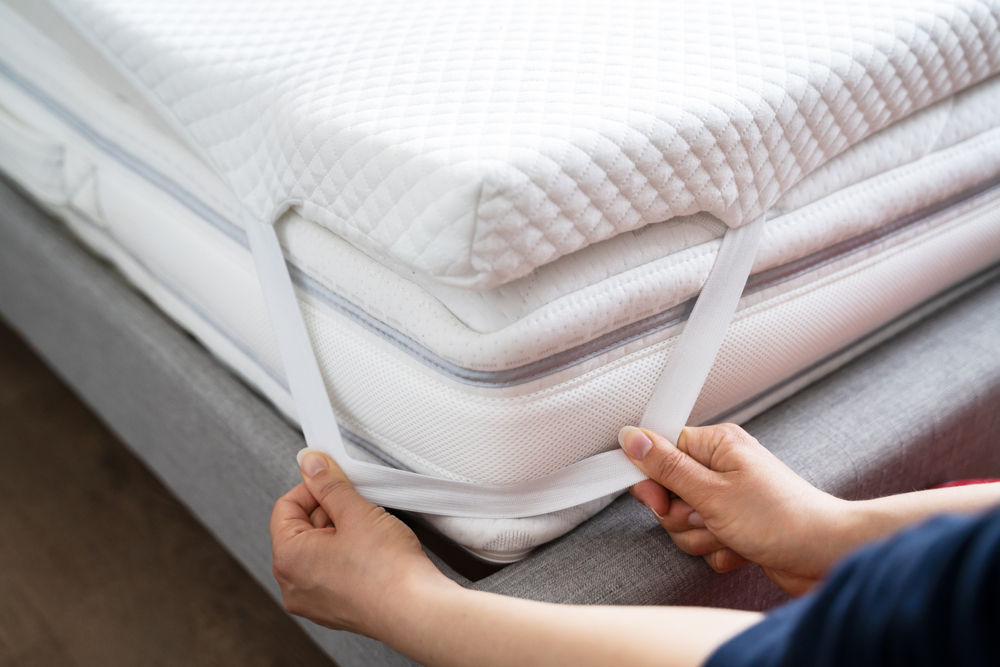
The Importance of a Good Mattress Topper
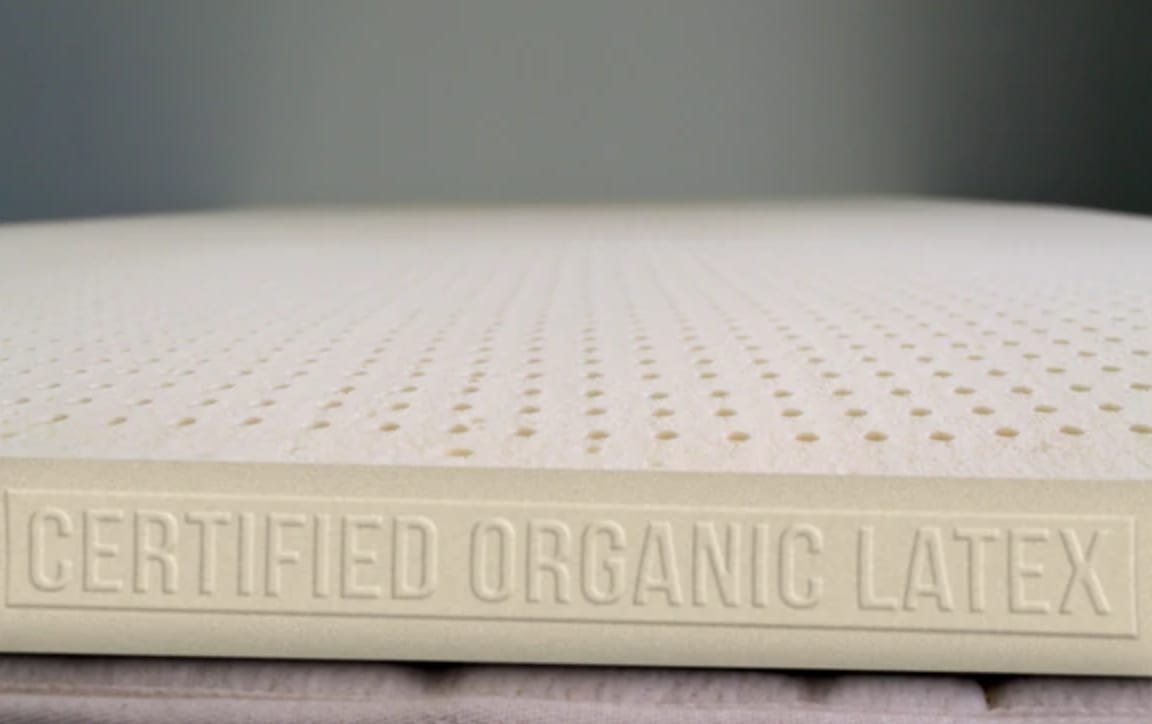 When it comes to getting a good night's sleep, your mattress plays a crucial role. But even the most expensive mattress can lose its comfort and support over time. This is where a
mattress topper
comes in. It is a thin layer of cushioning material that sits on top of your mattress, adding an extra layer of
comfort and support
to enhance your sleeping experience.
Latex
and
memory foam
are two popular materials used in mattress toppers, each with its own unique features and benefits.
When it comes to getting a good night's sleep, your mattress plays a crucial role. But even the most expensive mattress can lose its comfort and support over time. This is where a
mattress topper
comes in. It is a thin layer of cushioning material that sits on top of your mattress, adding an extra layer of
comfort and support
to enhance your sleeping experience.
Latex
and
memory foam
are two popular materials used in mattress toppers, each with its own unique features and benefits.
The Battle of Latex vs. Memory Foam

Latex Mattress Topper
Latex is a natural material derived from the sap of rubber trees. It is known for its durability and breathability , making it a popular choice for mattress toppers. Latex toppers come in different densities, with higher density providing more support and firmness . They also have anti-microbial properties, making them a good option for those with allergies. However, latex mattress toppers can be on the expensive side and may not be suitable for those on a budget. They also have a slight odor when first used, but this dissipates over time.Memory Foam Mattress Topper
Memory foam is a synthetic material that molds to your body shape, providing customized support and pressure relief . It is known for its hypoallergenic properties and is a good choice for people with allergies. Memory foam toppers also absorb movement, making them a great option for couples who don't want to disturb each other's sleep. However, memory foam can retain heat and may not be suitable for hot sleepers. It also has a slow response time , which may feel uncomfortable for some people.The Verdict
:max_bytes(150000):strip_icc()/SleeponLatex-b287d38f89374e4685ab0522b2fe1929.jpeg) When it comes to choosing between a
latex mattress topper
and a
memory foam mattress topper
, it ultimately depends on your personal preferences and needs. If you prioritize
breathability
and
durability
, a latex topper may be the better option for you. However, if you value
customized support
and
pressure relief
, a memory foam topper may be the way to go.
In conclusion, both latex and memory foam mattress toppers have their own unique benefits and it's important to consider your specific needs before making a decision. Whichever you choose, a good mattress topper can make a world of difference in your sleep quality and overall well-being.
When it comes to choosing between a
latex mattress topper
and a
memory foam mattress topper
, it ultimately depends on your personal preferences and needs. If you prioritize
breathability
and
durability
, a latex topper may be the better option for you. However, if you value
customized support
and
pressure relief
, a memory foam topper may be the way to go.
In conclusion, both latex and memory foam mattress toppers have their own unique benefits and it's important to consider your specific needs before making a decision. Whichever you choose, a good mattress topper can make a world of difference in your sleep quality and overall well-being.
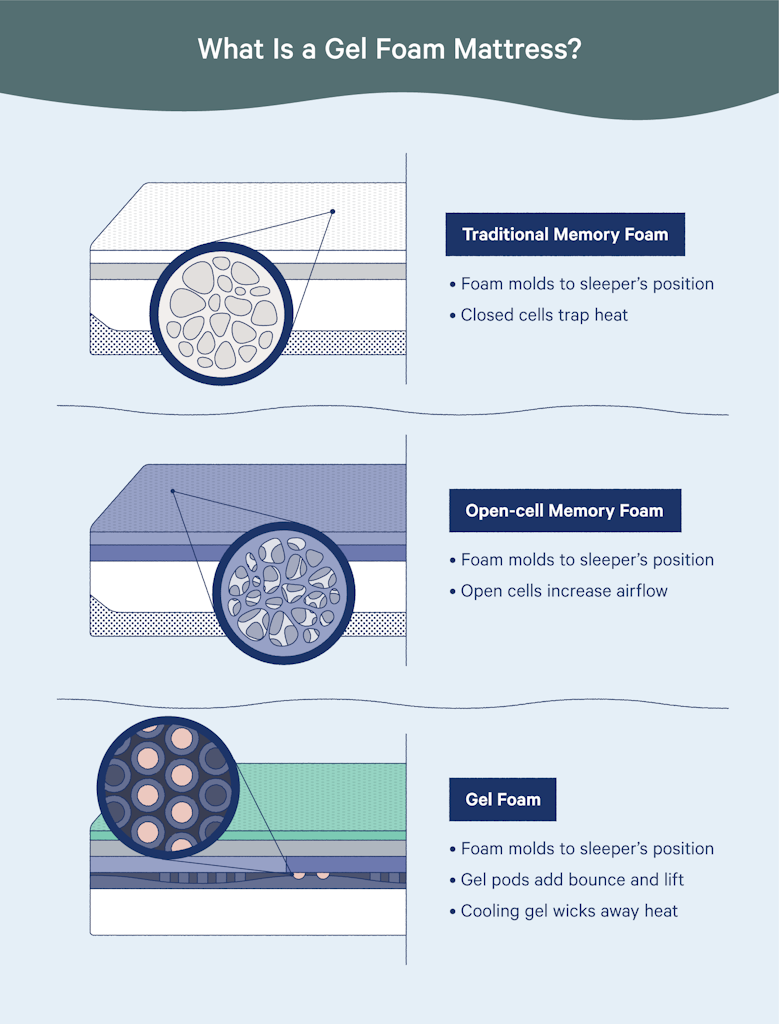
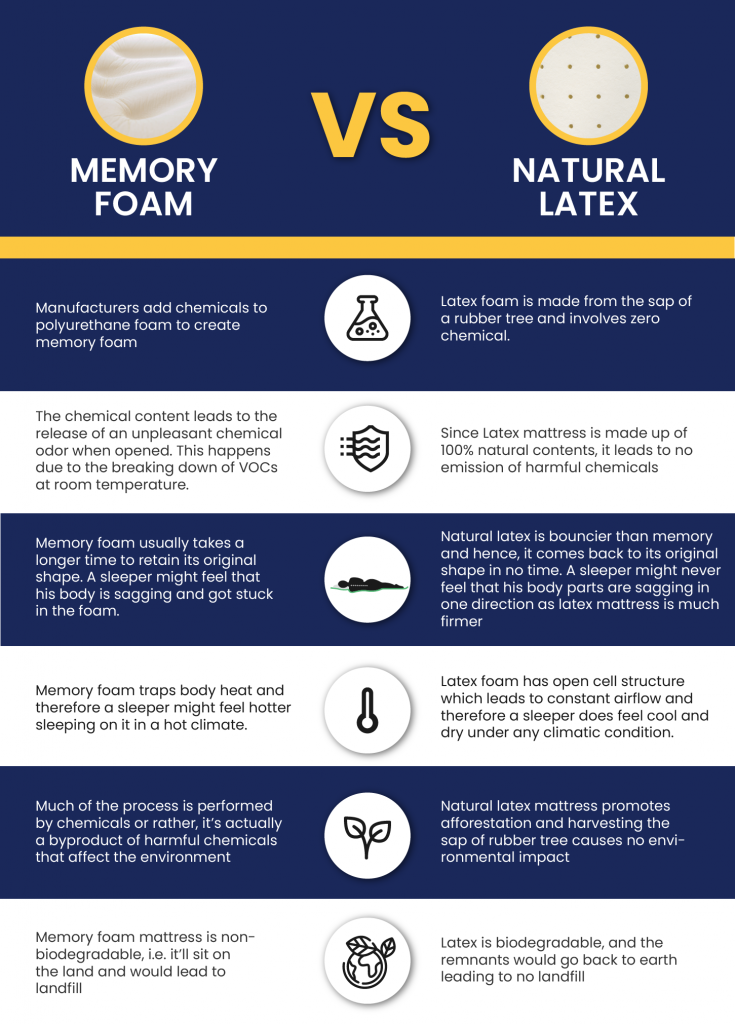

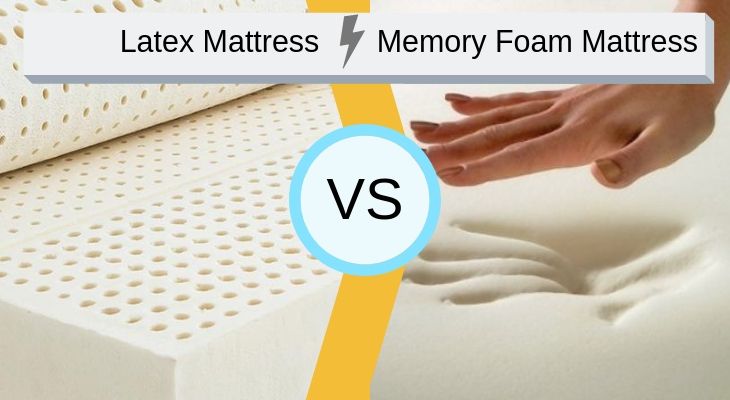

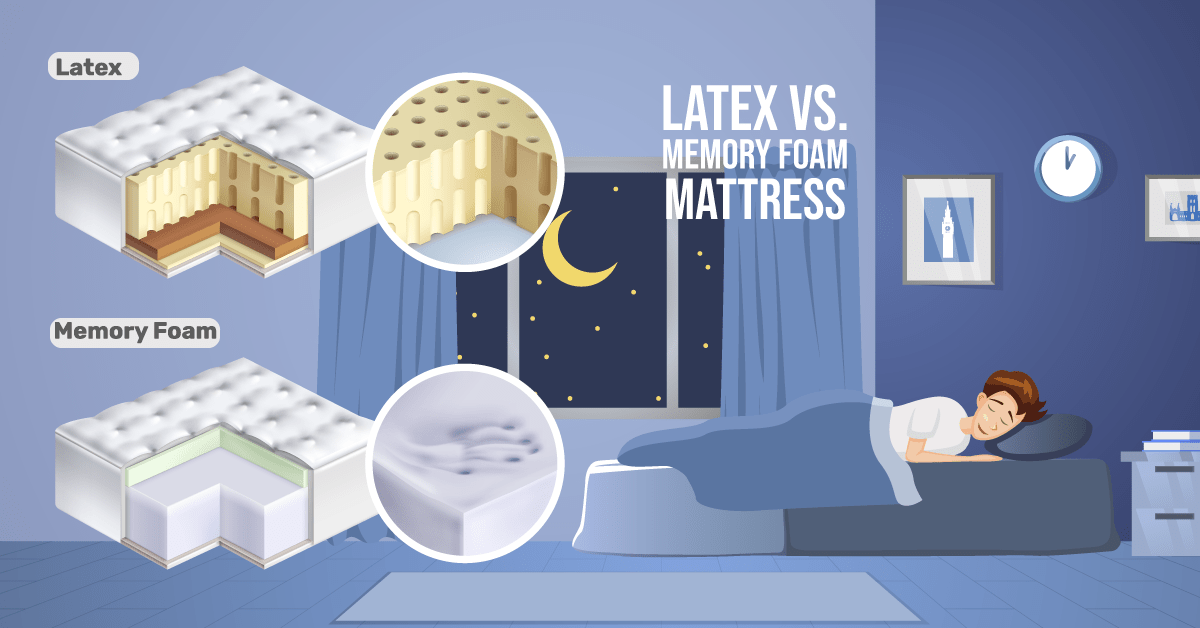

:max_bytes(150000):strip_icc()/SleeponLatex-b287d38f89374e4685ab0522b2fe1929.jpeg)
